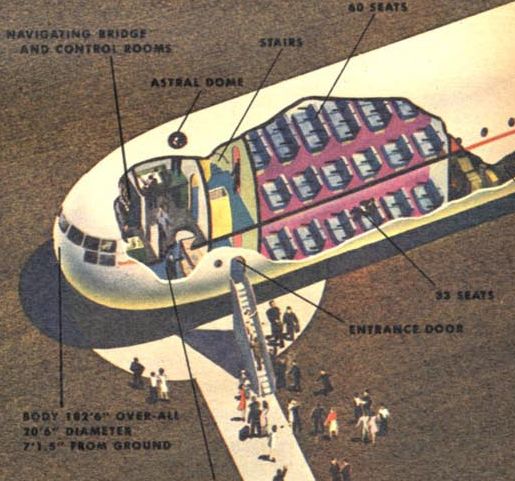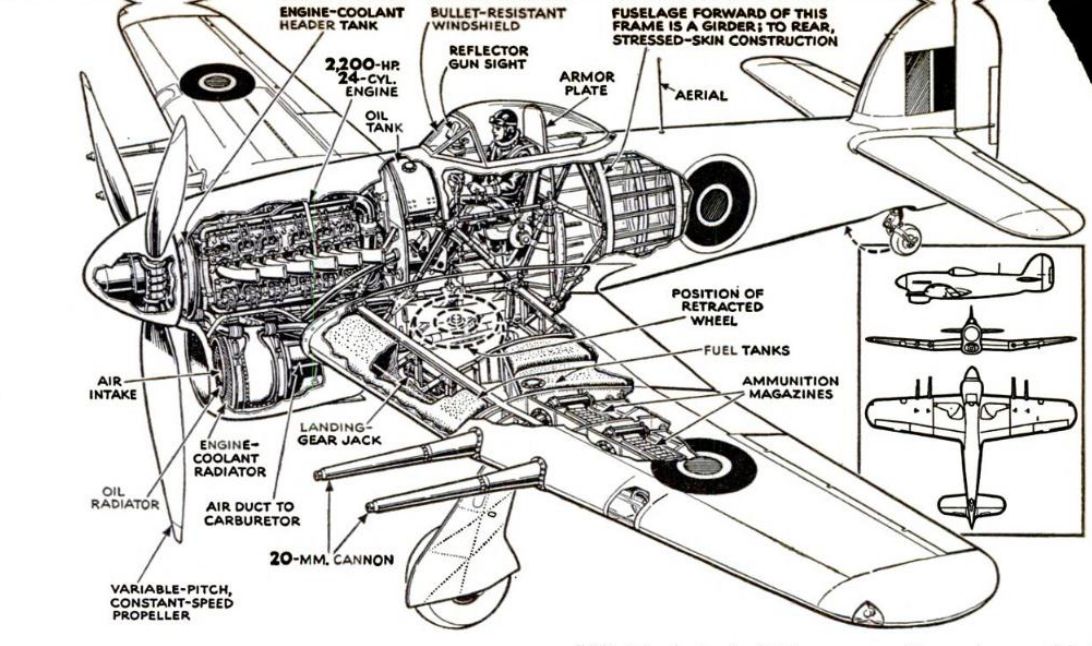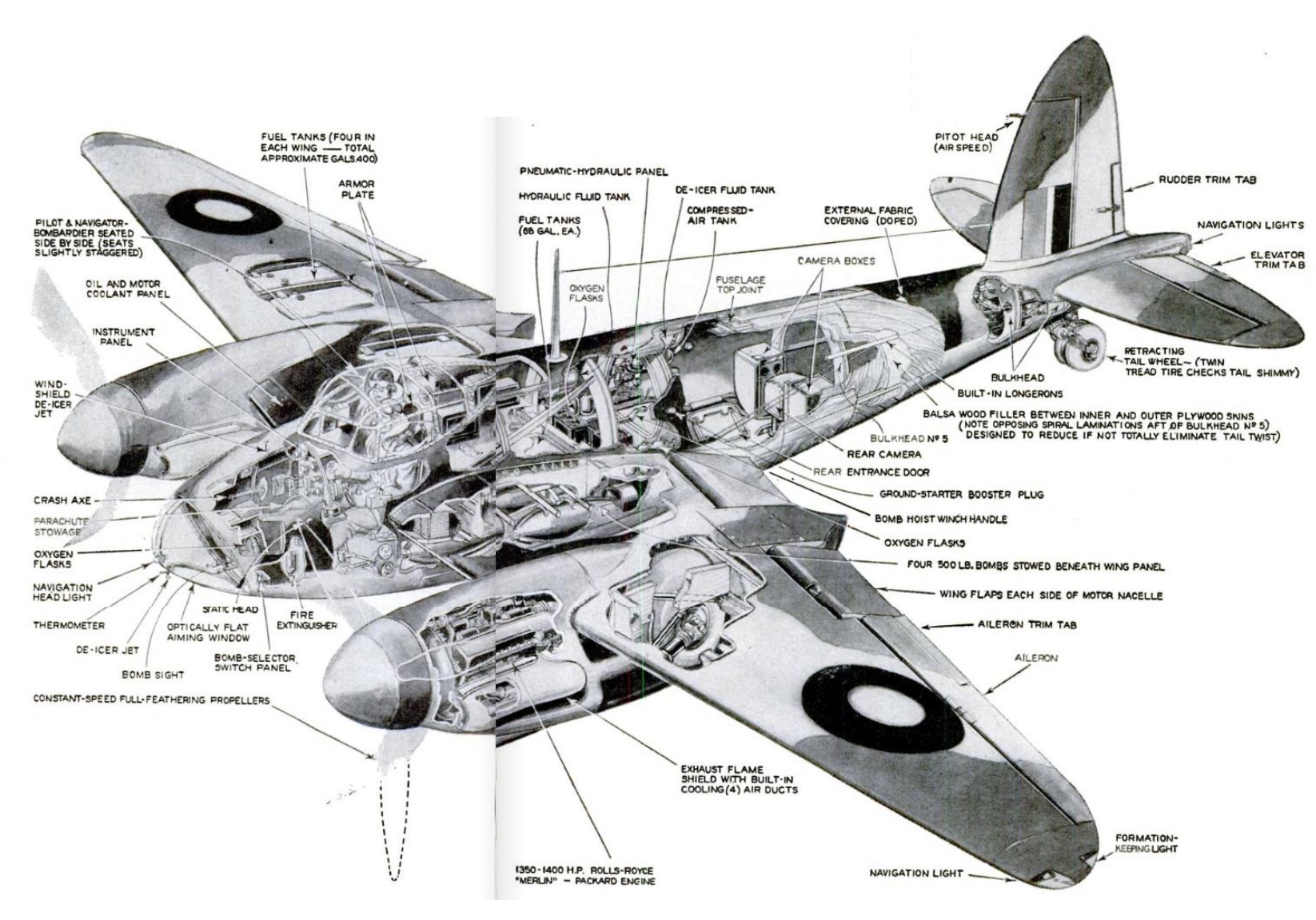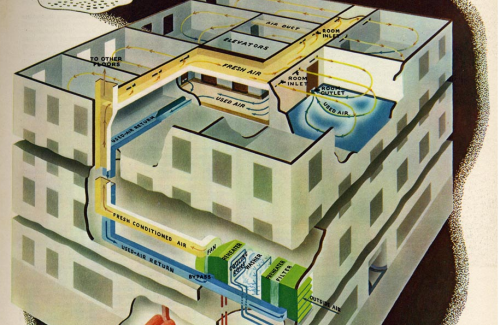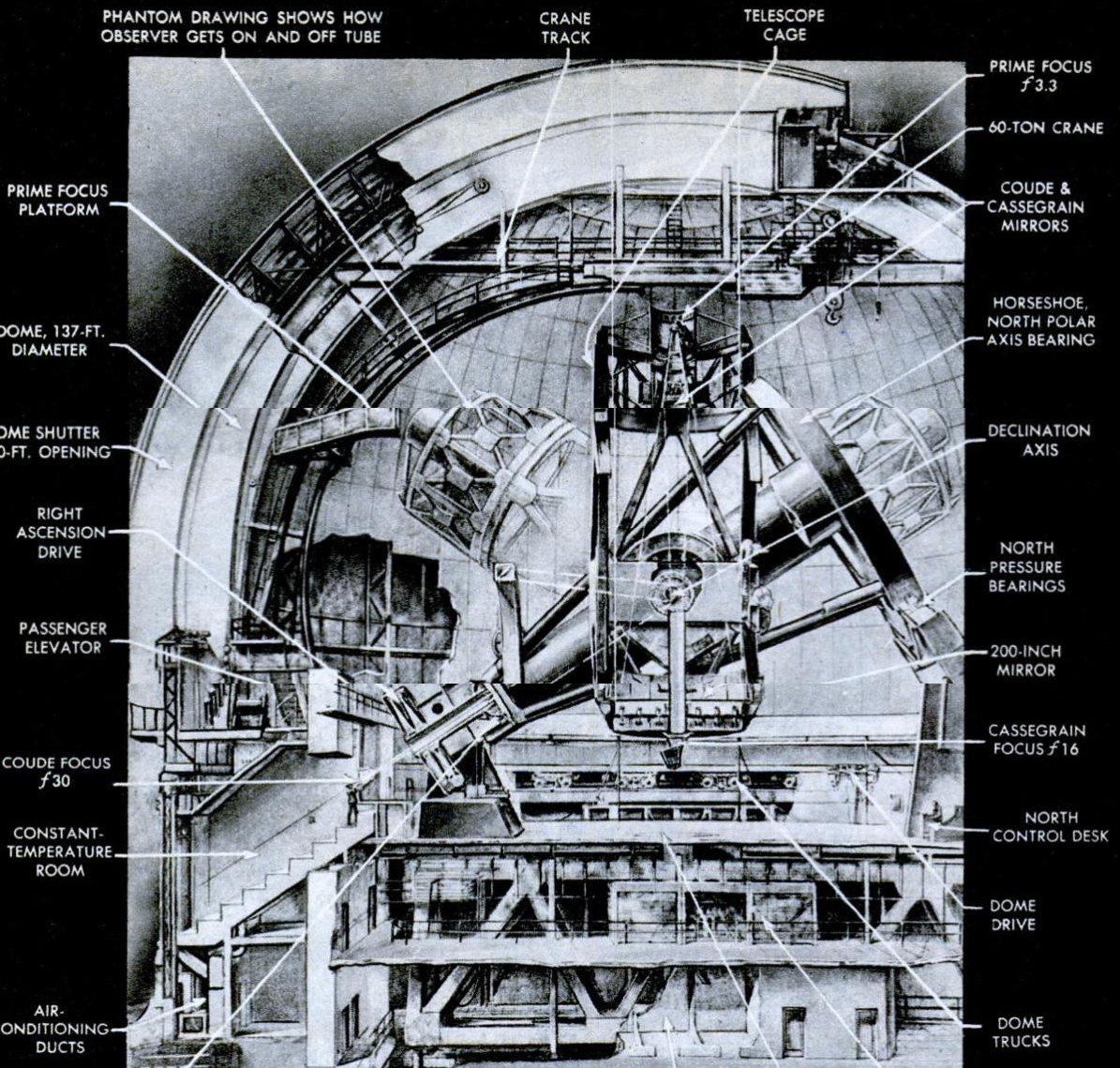
Famed Palomar Observatory, just outside of San Diego, CA, had not yet been finished at the time this cutaway drawing was published.
The drawing shows the observatory’s massive 200-inch mirror that, at that moment, was being finished at optical labs at Cal Tech, Pasadena, CA. The disk of glass was 17 feet in diameter, and waste glass produced during the grinding weighed 2 tons.
Source: Popular Mechanics March 1947

